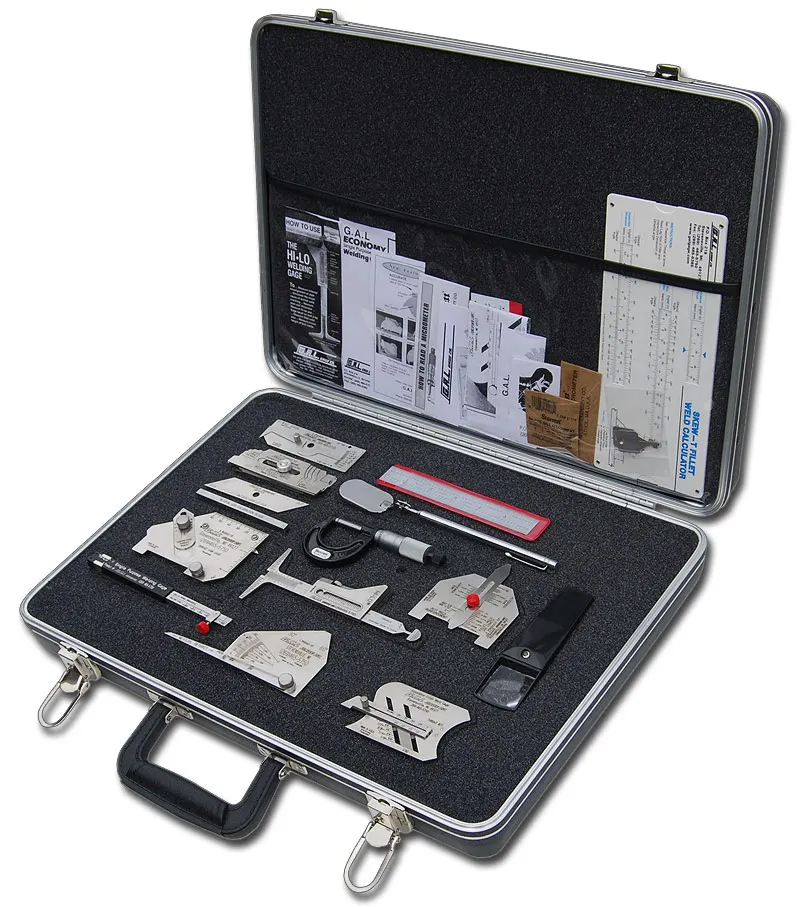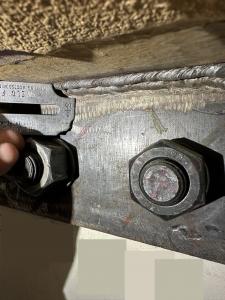Trustworthy Welding Inspection Gilbert Arizona: Trick Variables to Consider for Optimal Results
Trustworthy Welding Inspection Gilbert Arizona: Trick Variables to Consider for Optimal Results
Blog Article
Discovering the Significance of Welding Inspection in Industrial Applications: Safeguarding Versus Failures and Enhancing Durability
Welding evaluation offers as a vital line of defense in commercial applications, guaranteeing the structural stability and integrity of welded parts. By systematically determining problems such as porosity and insufficient combination, assessments not just avoid failures however additionally prolong the life-span of necessary assets. Following sector standards improves both safety and security and operational effectiveness; nevertheless, the effects of overlooking these techniques can be extreme. As we examine the complex advantages of regular assessments, it becomes apparent that recognizing these characteristics is not merely a matter of compliance but a calculated crucial for long life and threat reduction.
Role of Welding Inspection
Welding inspection functions as a vital protect in industrial applications, making sure that welded structures satisfy specified standards of high quality and safety and security. This procedure includes a methodical evaluation of welds to verify their integrity, toughness, and conformity with established codes and requirements. The function of welding inspection is multifaceted, encompassing both visual analyses and non-destructive screening techniques, which may consist of ultrasonic, radiographic, or magnetic fragment screening.
Reliable welding assessment identifies potential concerns early, alleviating the danger of catastrophic failings that can develop from inadequate welds. By ensuring that welds are implemented according to create specifications, inspectors add to the overall architectural dependability and longevity of elements in vital applications, such as pressure vessels, pipes, and structural structures.

Usual Welding Defects

Among one of the most widespread issues is porosity, characterized by small gas pockets trapped within the weld steel. This happens because of pollutants or incorrect protecting gas, jeopardizing the weld's stamina. One more significant issue is insufficient blend, where the weld steel stops working to bond appropriately with the base product, potentially resulting in architectural weak points.

Splits can likewise establish during or after the welding procedure, usually associated to thermal stresses or improper air conditioning rates. Furthermore, undercutting, where the base steel is eroded along the weld grain, can damage the joint and is usually brought on by extreme heat input or wrong method.
Moreover, absence of penetration occurs when the weld steel does not reach the origin of the joint, causing inadequate toughness. Understanding these usual problems is essential for welders and assessors alike to ensure that bonded structures fulfill security and performance criteria, ultimately protecting against prospective failings in industrial applications.
Advantages of Regular Examinations
Regular examinations function as a crucial guard in guaranteeing the integrity and longevity of welded frameworks. These examinations recognize prospective issues and weak points that might endanger the integrity of welds, permitting prompt remediation before problems rise. By carrying out an organized evaluation routine, companies can considerably minimize the threat of devastating failings that might lead to expensive downtime, tools substitute, and even mishaps.
Moreover, routine examinations contribute to improved quality assurance important link throughout the welding process. By adhering to a regular inspection schedule, business can make certain that their welding methods fulfill recognized high quality criteria and finest methods. This not only promotes a culture of responsibility however likewise motivates constant enhancement among welding workers.
Additionally, regular examinations facilitate better upkeep preparation. By recognizing damage early, companies can tactically set up substitutes and repair services, reducing disruption to operations. This proactive approach inevitably results in extended asset life expectancy and boosted total performance.
Lastly, a dedication to routine inspections can boost a business's credibility in the sector. Clients and stakeholders progressively value companies that prioritize security and quality, thus enhancing depend home on and potentially bring about enhanced organization chances.
Sector Criteria and Rules
Complying with market criteria and policies is a basic aspect of welding assessment that complements the advantages of normal assessments. These criteria, established by companies such as the American Welding Culture (AWS) and the American Society of Mechanical Designers (ASME), offer a structure for ideal practices in welding procedures, materials, and assessment techniques. Compliance with these laws guarantees that welds satisfy the required high quality and security benchmarks, substantially minimizing the threat of architectural failings.
Regulatory bodies like the Occupational Security and Wellness Administration (OSHA) additionally enforce guidelines that safeguard employees and the setting throughout welding procedures. By adhering to these developed criteria, industries can enhance the reliability of their elements and structures, ensuring they do as planned under numerous functional problems.
In addition, adherence to sector criteria cultivates uniformity in quality control, helping with smoother communication among stakeholders and regulative companies. This alignment not only minimizes liability dangers however also boosts the trustworthiness of companies this hyperlink in competitive markets. Welding Inspection Gilbert Arizona. Inevitably, conformity with welding requirements and laws is not merely a lawful obligation; it is an essential investment in security, efficiency, and long-term operational success
Future Trends in Welding Examination
As sectors remain to advance, the future of welding examination is poised to integrate innovative modern technologies that improve accuracy and performance. Among one of the most substantial fads is the adoption of automation and robotics in inspection procedures. Automated systems can carry out inspections swiftly, lowering human mistake and raising throughput in producing environments.
In addition, the combination of artificial knowledge (AI) and artificial intelligence algorithms will certainly allow anticipating analytics, permitting real-time analyses and proactive upkeep. By evaluating information from previous inspections, these modern technologies can determine patterns that could suggest possible failures, therefore extending the life expectancy of welded elements.
Furthermore, non-destructive screening (NDT) techniques are anticipated to become much more innovative, utilizing devices such as drones and independent cars furnished with advanced sensing units. Welding Inspection Gilbert Arizona. These advancements will certainly boost the ability to examine hard-to-reach or unsafe areas without jeopardizing safety and security
Furthermore, the trend towards digitalization will bring about boosted data management systems that assist in much better tracking, reporting, and compliance with market criteria. In recap, the future of welding inspection is characterized by technical innovations that promise to substantially boost integrity, safety and security, and functional efficiency in various commercial applications.
Conclusion
In conclusion, welding inspection offers an important feature in making certain the stability and resilience of welded structures throughout different commercial applications. As improvements in technology proceed to progress, the future of welding inspection assures enhanced accuracy and efficiency, inevitably adding to the durability of vital facilities.
Welding examination offers as an essential line of defense in commercial applications, making sure the structural integrity and reliability of welded parts.Welding evaluation serves as an important safeguard in commercial applications, ensuring that welded frameworks satisfy specified criteria of top quality and safety. Eventually, the role of welding assessment is indispensable in advertising safety and security, improving efficiency, and securing investments in commercial framework.
These criteria, established by organizations such as the American Welding Culture (AWS) and the American Society of Mechanical Designers (ASME), give a structure for best methods in welding processes, materials, and evaluation strategies.In conclusion, welding examination serves a crucial feature in ensuring the stability and resilience of welded structures across numerous commercial applications.
Report this page